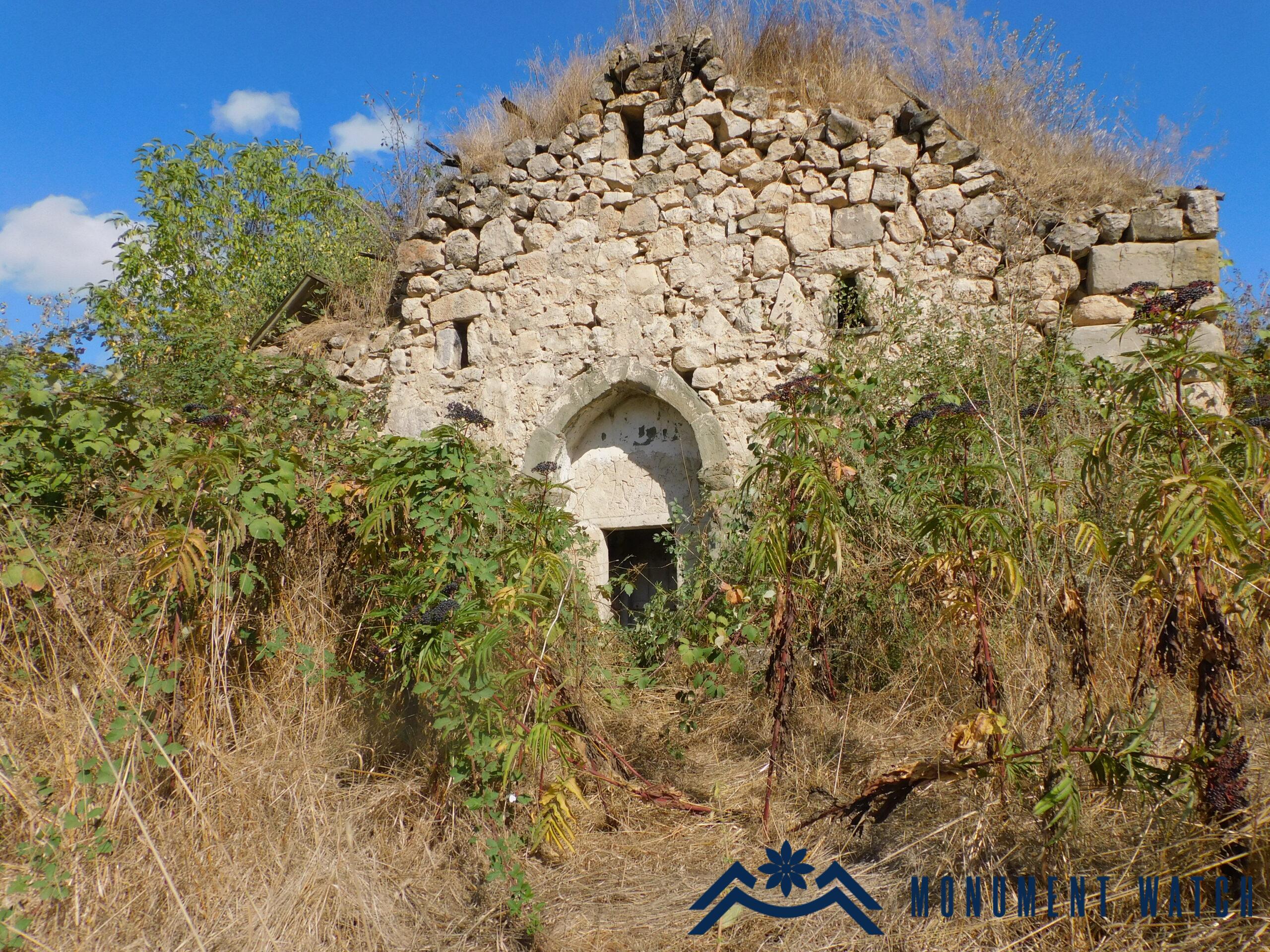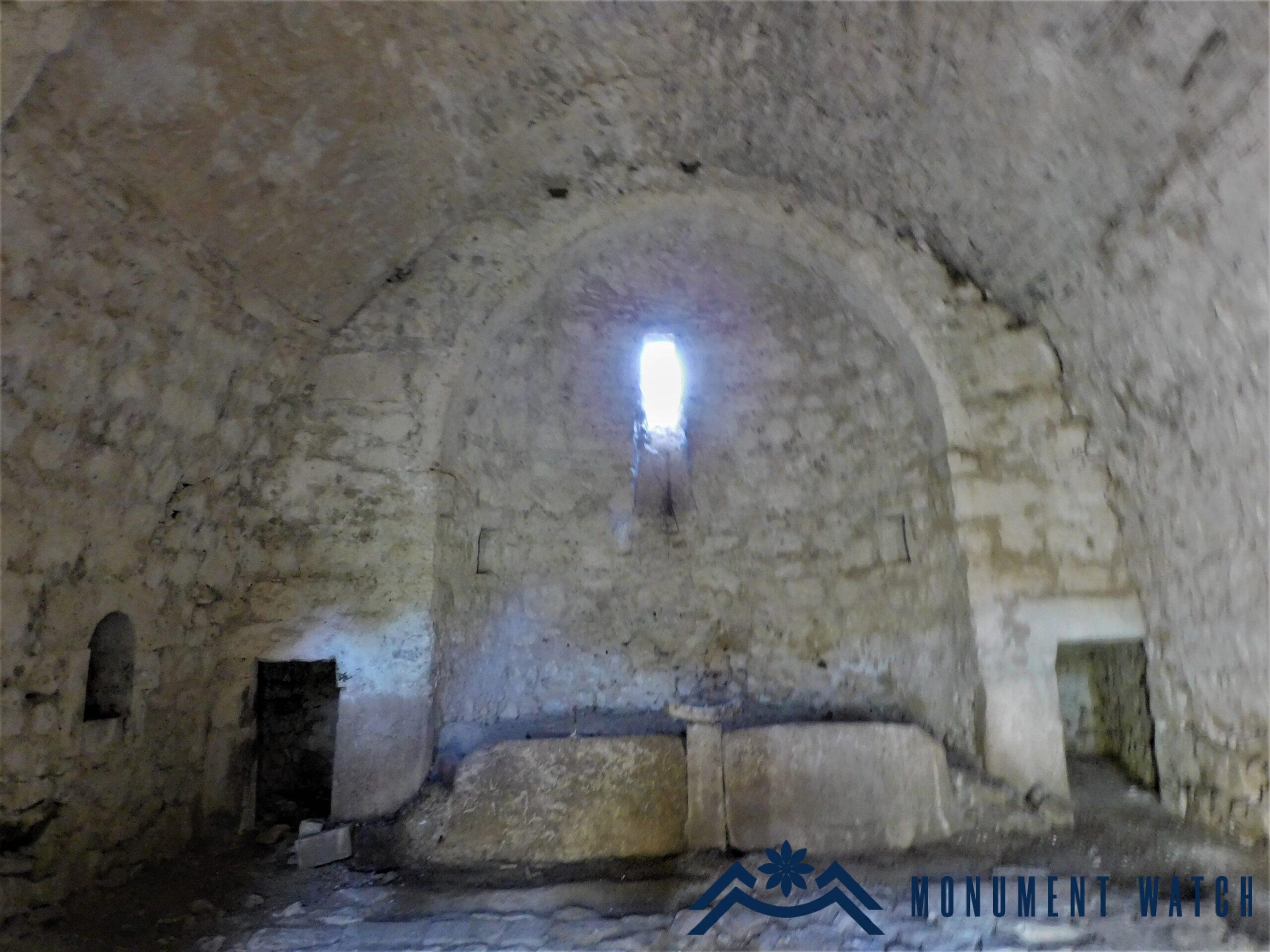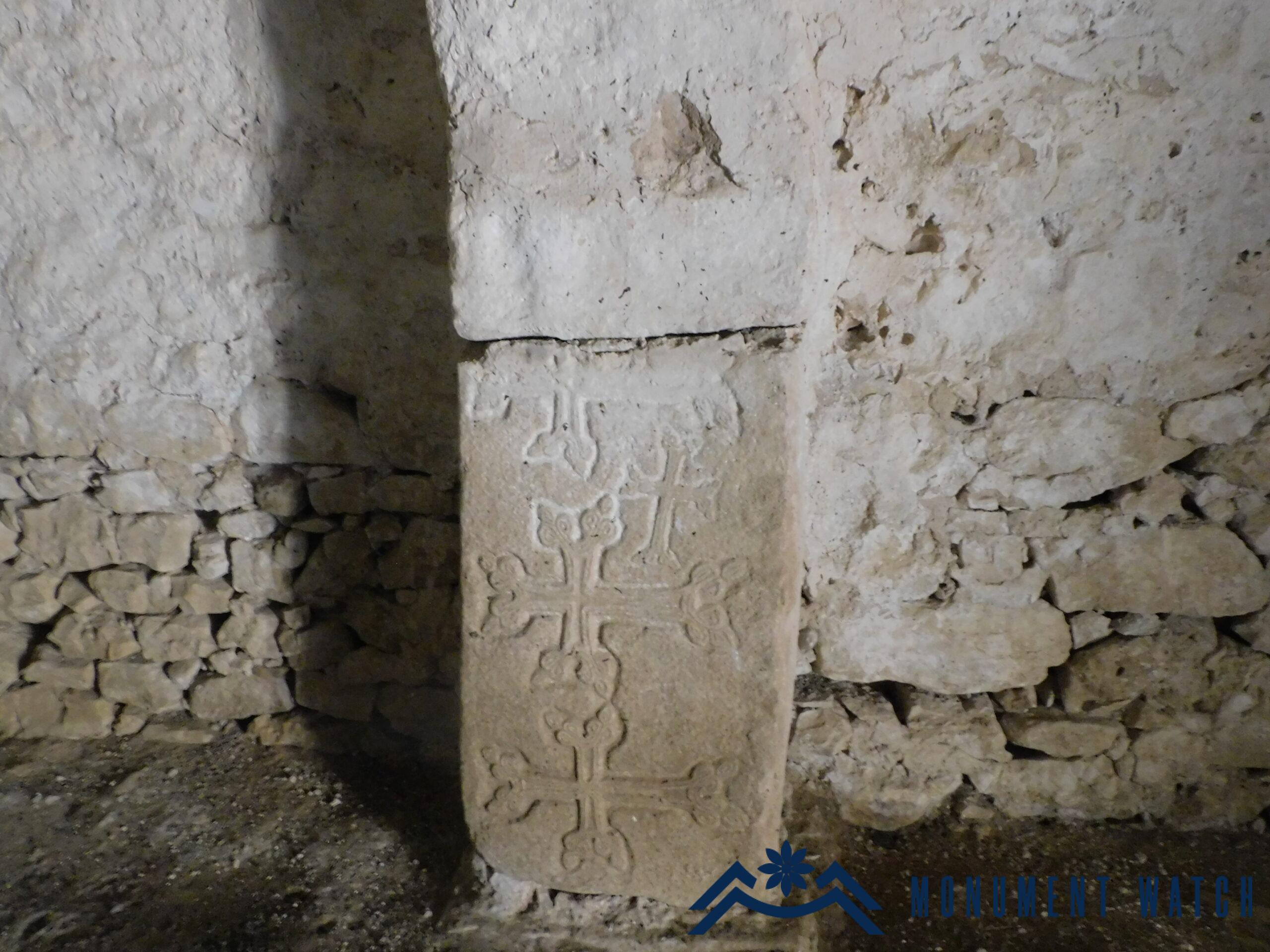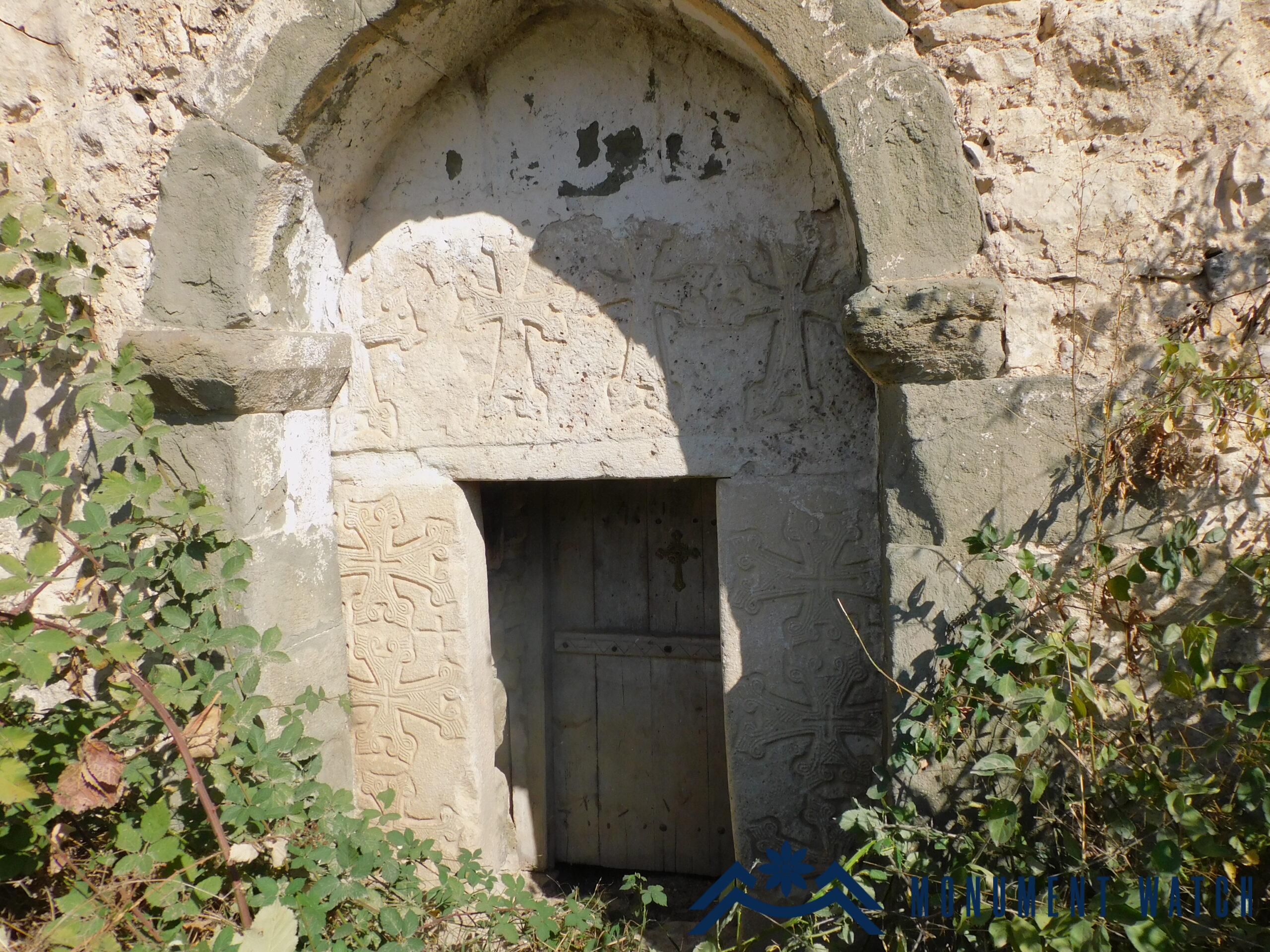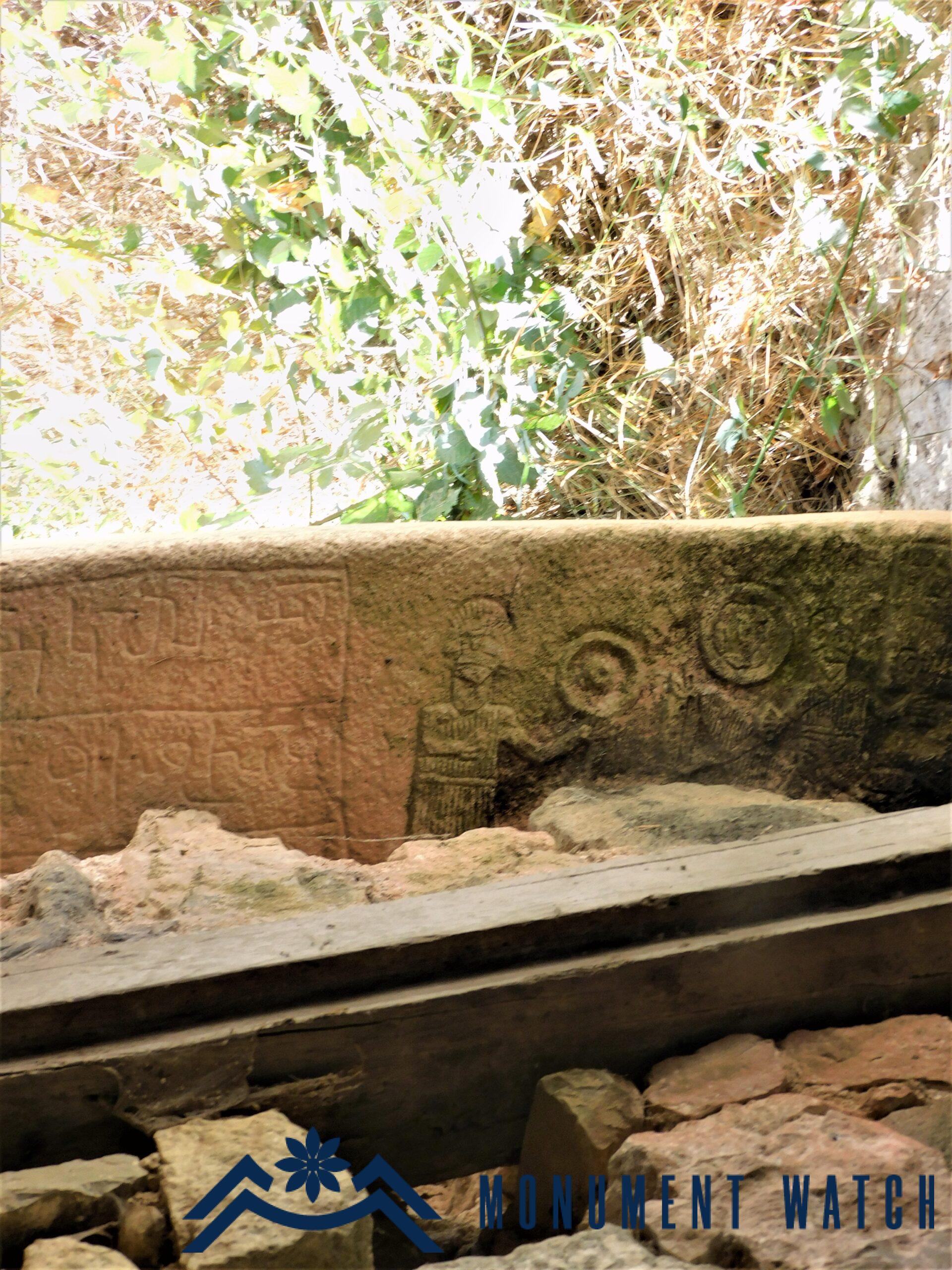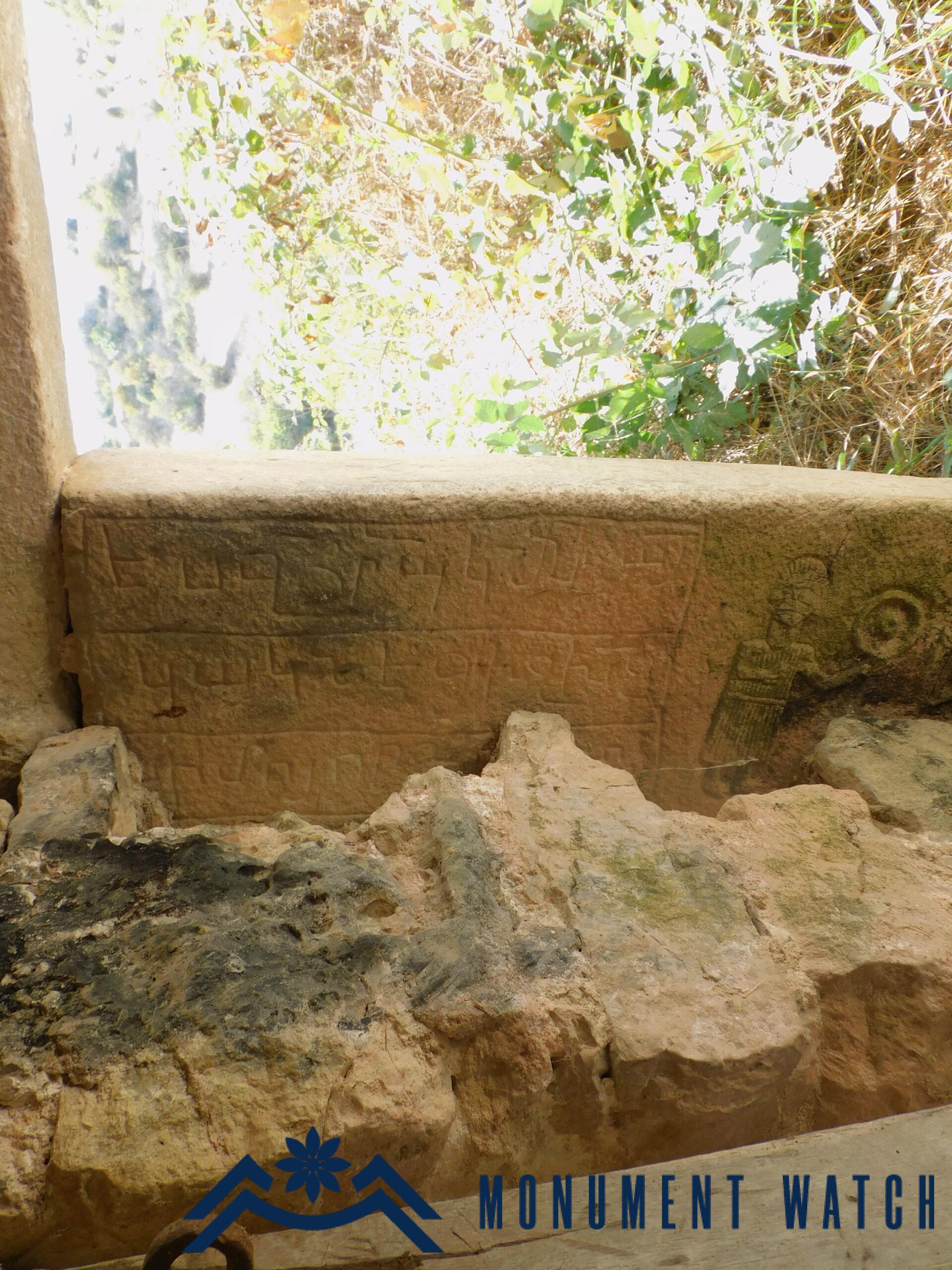Yeghtsadzor Church of Upper Sznek
Location
The church known as "Yeghtsadzor Yeghtsi" is located on the outskirts of Upper Sznek village in the Askeran region of the Republic of Artsakh (Fig. 1).
Historical overview
There is no historical information available about the church. In his description of Upper Sznek, Makar Barkhudareants only mentions the village square's church (Barkhutareants 1895, 101).
Architectural-compositional examination
The church is a rectangular vaulted single-nave hall with an eastern semi-circular tabernacle, a pair of sacristies, and windows built into the bema (Fig. 2). The burial arches are supported by pillars made of tombstones from the 16th and 17th centuries. A baptismal font is built into the northern wall near the bema. Reliefs on the bema, table, and curb stone at the entrance to the sacristies are also created by reusing khachkars, tombstones, and other polished stones (Fig. 3). In them, a khachkar from the 12th-13th centuries with a sculpture stands out. The church's measurements are 10x8 meters. It is made of rough limestone and sandstone, lime mortar, and is plastered internally. The western and eastern facades each have three narrow windows. The roof is made of asbestos roofing from the years of independence.
The church's only entrance is from the west (Fig. 4). It has double frames. The outer frame is rectangular in section, made of gray sandstone, with simple slab capitals and a pointed arch. The inner frame is composed of two upright limestone tombstones that serve as a lintel and are placed on them. Cross compositions can be found on all tombstones. On the opposite side of the right-hand tombstone (Fig. 5), there is a sculpture depicting the deceased in a family circle: the cupbearer hands him the cup of wine, while the mother holds the hand of his late son and the writing slate, on which the date is engraved but cannot be read clearly. "I, Zohrap, raised this cross for my son by the will and blessing of God," says the inscription on the left side (Fig. 6).
The cemetery typical of the 16th and 17th centuries surrounds the church.
The condition before and after the war
The church was not damaged during the Artsakh wars, but it is in disrepair and critical condition, with a large area covered with grass and vegetation (Fig. 5).
Following the 44-day war in 2020, the village has become cross-border, with enemy positions 600-800 meters away. Currently, Azerbaijan aims and targets the village and the church.
Bibliography
- Barkhutareants M., Artsakh, Baku, 1895.
Yeghtsadzor Church of Upper Sznek
Artsakh

